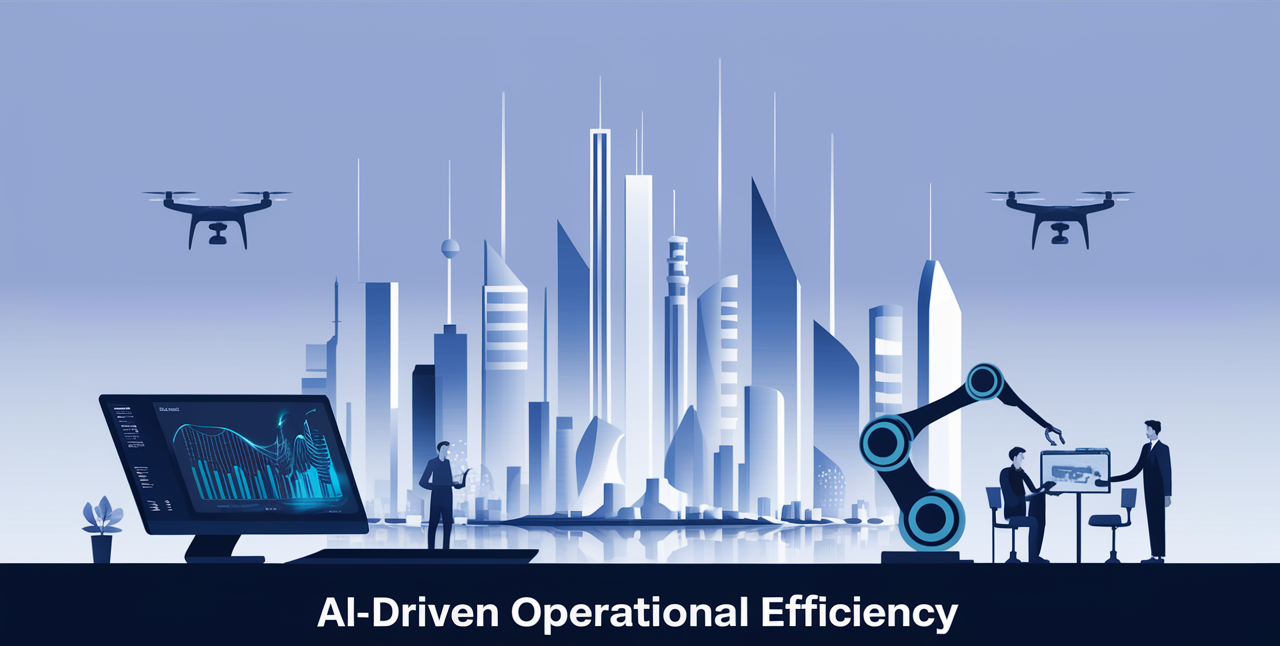AI-Driven Strategies for Operational Efficiency
Explore the impact of AI, MLOps, and RPA on SaaS and business growth. Understand key roles like Data Scientists and Engineers for AI success. Learn about the power of Big Data, cost-saving RPA, and choosing the right system architecture for scalability and innovation.

In today's fast-paced world of tech, SaaS founders and other enterprise leaders are continuously exploring new methodologies to stay ahead.
With a focus on enhancing customer experience and the organization’s operational efficiency, using advanced technologies like AI, MLOps, and RPA has basically become unavoidable.
Driving SaaS Success
In the rapidly evolving tech landscape, SaaS founders and other business leaders are at the forefront of innovation and efficiency, driven by AI.
Creating a customer-focused product strategy ensures that your product's tech development enhances customer experience, satisfaction, and loyalty, which are critical for your business to grow.
If you decide to involve an expert to support you in tackling challenges, the choice of your tech partner (not a mere subcontractor!) becomes crucial here.
Transitioning from the strategic level of customer-focused product development, it's also essential to consider the operational aspects that drive these innovations.
We see the adoption of MLOps in AI development not just as a trend, but as a transformative practice that brings a structured approach to Machine Learning operations, automates and streamlines your workflows while enhancing productivity, reducing costs, and ensuring the reliability and quality of your AI applications.
Strategic tech partnerships and operational excellence can help in paving your way for competitive AI innovation and sustainable growth.
After the foundational practices are in place, the next step is to build a capable team that can realize these practices effectively.
3 Key Roles Behind the AI Scenes
However, to effectively implement AI, it's essential to understand what roles you need in your AI army: Data Scientists, Data Engineers, and Machine Learning Engineers. They are the backbone of AI implementation, turning raw data into actionable insights and embedding AI into real-world applications.
The expertise of this dynamic trio can help you in getting the most out of your AI projects.
Getting to know the team roles and setting them up is just the beginning; applying their skills to make the most of data is where the transformative power of tech starts.
Data-Driven Decisions
Leveraging the power of Big Data and Artificial Intelligence (AI) is not just about data collection, data analysis, or having the fanciest AI, but about being able to uncover patterns, predict trends, and make informed business decisions thus streamlining your operations, fostering innovation, and maintaining your competitiveness in a data-driven world.
As we dive deeper into the application of AI, it's clear that automation plays a significant role in optimizing performance.
The Cost-Cutting Power of RPA
Robotic Process Automation enables you to automate a broad range of repetitive, rule-based tasks with precision, thus driving cost savings and operational improvements.
Combining RPA with Machine Learning exemplifies the potential for RPA to evolve from simple task automation to a more intelligent system capable of handling complex processes. For example, performing tasks automatically, such as data entry or processing invoices, with speed and accuracy can free up your employees and allow them to focus on more value-adding activities.
The final piece of the puzzle lies in choosing the right technological infrastructure to support your advancements.
Optimizing System Architecture for Business Growth
The strategic choice of system architecture plays a critical role in your technology’s maintainability, scalability, and adaptability.
While adopting microservices architecture can enhance scalability, security, and development speed, allowing your business to efficiently develop, test, deploy, and manage high-performance applications, monolithic architecture may still be preferable for smaller projects or teams with limited resources or microservices expertise.
However, the choice between microservices and the traditional monolithic architecture is not black and white; it involves considering factors like business needs, team capabilities, and project complexity.
In conclusion, the journey through technological advancements highlights the dynamic and multifaceted nature of modern business operations.
Embracing these technologies not only drives your efficiency and innovation but prepares your business to face the challenges of tomorrow's ever-changing market.
In conclusion, as we navigate through the complexities and opportunities presented by technological advancements, the importance of strategic partnerships, operational excellence, and a keen focus on customer satisfaction becomes evident. Embracing these elements is not just about keeping pace with change but about setting the pace for innovation and growth. If you're ready to explore how our expertise can help transform your business for the better, we invite you to reach out.

